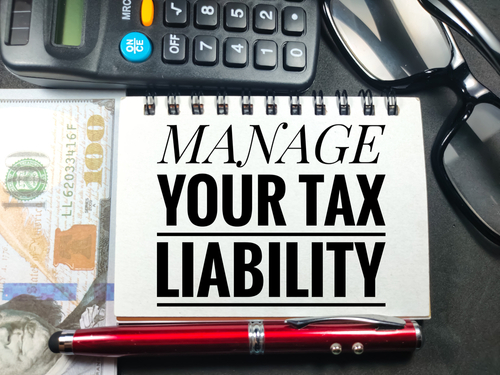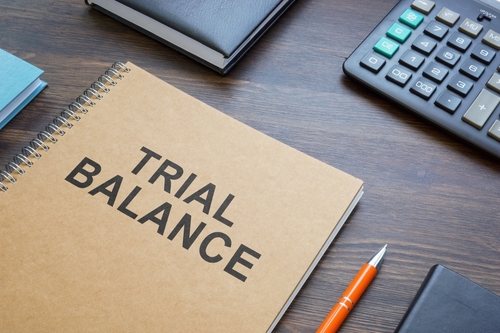 Most people know the basic concept that certain types of investment accounts are tax sheltered while others are not. Think 401(k), 403(b), IRA and Roth IRA accounts, for example. What most people are not aware of is how you split your investment positions between your taxable and non-taxable accounts can result in major tax savings.
Most people know the basic concept that certain types of investment accounts are tax sheltered while others are not. Think 401(k), 403(b), IRA and Roth IRA accounts, for example. What most people are not aware of is how you split your investment positions between your taxable and non-taxable accounts can result in major tax savings.
Asset Allocation and Location
One of the core principles of investing is to have an appropriate asset allocation that aligns with your risk tolerance and goals. In other words, how much of your investable net worth is in cash, stocks, bonds, precious metals, real estate, alternative assets, private investments, etc? Once you have this determined, the next consideration should be the location of these assets, primarily meaning whether you hold them in a taxable or tax-sheltered account.
The first, core principle behind asset location positioning is that bonds and other fixed income investments get the highest priority within tax sheltered accounts because they pay high-taxed ordinary income. Stocks that pay qualified dividends may be taxed at the more advantageous long-term capital gains rate, so they are typically better in taxable accounts.
What Are the Stakes?
To put it simply, big money. Take the example of a hypothetical $2 million portfolio evenly split between stocks and bonds. In the case where an investor has $1 million each in a taxable account (50/50 stock and bonds) and another $1 million in a tax-sheltered account (again 50/50 stock and bonds); this would cost about $148,000 over 30 years versus placing all the stock in a taxable account and all the bonds in a tax-sheltered account.
Asset Class Location Ranking
Of course, there are many more nuances and types of investments. Below we review 10 different types of assets, ranking them in order of those that get the most benefit from being in a tax-sheltered account with an explanation of why.
- K-1-Free Commodity Funds
Popular for investing in futures, these are typically structured as Cayman Islands holding companies. As a result, they often kick-off highly taxed ordinary income even when the fund is losing money. Keep these in a tax-sheltered account at all costs. - Junk Bonds
High-yield corporate bonds typically come with large coupons (often 7 percent to 9 percent) and a small capital loss in the 1 percent to 2 percent range. Since the large coupon payment is taxed as ordinary income, while capital losses are worth less from a tax perspective, junk bonds are a prime candidate to go into a tax-sheltered account. - Income Stocks
Preferred shares and real estate investment trusts are characterized by their high unqualified dividends, so they are not eligible for preferential capital gains tax rates. This makes them best suited for a tax-sheltered account. - High-Grade Bonds
Similar to junk bonds, but with lower coupons and smaller capital losses, the benefits of holding these in a tax-sheltered account is less than the items above, but it is still preferable to place them in a tax-sheltered account. - U.S. Treasuries
The interest on U.S. Treasuries is taxed as ordinary income; however, it is exempt from state income tax. Depending on the state in which you are subject to taxes, these fall in the middle ground and could be held in either a taxable or tax-sheltered account. - Actively Managed Mutual Funds
The frequent churn of the holdings in actively managed funds typically creates more short-term capital gains versus long-term. Again, depending on total returns and how active the fund manager is, these could be held in either a taxable or tax-sheltered account. - K-1 Commodity Funds
Usually taxed as partnerships, profits typically get a 60/40 treatment, with 60 percent of gains classified as long-term and qualifying for favorable rates, putting them in the middle ground as well. - High-Dividend Stocks
For some investors, dividends are king. Think utility stocks and big-name blue chips with a steady track record of paying consistent dividends, like Altria. Since most, if not all, the dividend income is usually in the form of qualified dividends, holding these in a taxable account is much less painful. - Stock Index Funds and Low Dividend Stocks
Broader market mutual funds and ETFs have lower dividends. For example, on average, a total U.S. market ETF yields approximately 0.3 percent. Given this and their low churn, these funds are prime to be held in a taxable account, especially if the intended holding period is more than a year and will qualify you for long-term capital gains treatment and defer any taxable event until sale. - Master Limited Partnerships (MLPs) and Private Real Estate Funds
Typical of oil and natural gas pipeline investments, MLPs pay big dividends early on and they usually are not taxed in early years. Similarly, private placement real estate fund investments are shielded from the income they produce due to the upfront benefits of depreciation. Given their structure and the fact that they hold debt attributable to the owner, however, makes them a no-go for a tax-sheltered account since they create what is considered “unrelated business taxable income.” This makes these investments only suitable for a regular taxable account.
Conclusion
The decision of which types of investments you keep in either taxable or tax-sheltered accounts can make a big difference in how your investments grow and how much you keep. Consider evaluating not only your asset allocation but also your asset location to optimize for taxes.

 When it comes to any business, but especially for a start-up, it’s essential to determine how long a company can survive before it must declare bankruptcy and/or close its doors. The biggest metric, especially for a start-up, is to determine how much money a company has to keep its lights on.
When it comes to any business, but especially for a start-up, it’s essential to determine how long a company can survive before it must declare bankruptcy and/or close its doors. The biggest metric, especially for a start-up, is to determine how much money a company has to keep its lights on. One of the more insightful quotes of baseball great Yogi Berra was, “If you don’t know where you’re going, you’ll end up someplace else.”
One of the more insightful quotes of baseball great Yogi Berra was, “If you don’t know where you’re going, you’ll end up someplace else.” What started as Youth Financial Literacy Day some years ago is now a monthlong event: Financial Literacy Month. It all started in 2003 when some U.S. legislators got together and decided that we needed more days dedicated to this topic. So, what does that mean for us? Plenty. It’s one month out of the entire year you can dedicate to getting your financial ducks in a row by engaging in fiscally savvy activities, absorbing all the knowledge, and then sharing your learnings with family, friends, and the world.
What started as Youth Financial Literacy Day some years ago is now a monthlong event: Financial Literacy Month. It all started in 2003 when some U.S. legislators got together and decided that we needed more days dedicated to this topic. So, what does that mean for us? Plenty. It’s one month out of the entire year you can dedicate to getting your financial ducks in a row by engaging in fiscally savvy activities, absorbing all the knowledge, and then sharing your learnings with family, friends, and the world. Modern business today is dominated by digital transactions and interactions. Businesses are increasingly storing customers’ personal information, which is potentially accessible without the customers’ knowledge or consent. Therefore, understanding the significance and implications of digital trust will help businesses foster it, as it is crucial for success.
Modern business today is dominated by digital transactions and interactions. Businesses are increasingly storing customers’ personal information, which is potentially accessible without the customers’ knowledge or consent. Therefore, understanding the significance and implications of digital trust will help businesses foster it, as it is crucial for success.  Consolidated Appropriations Act, 2024 (HR 4366) – On March 9, the president signed the latest appropriations bill passed in time to halt a government shutdown. While this bill does authorize funding through the end of the fiscal year (Sept. 30), it only addresses six of the 12 bills necessary to fully fund the government. The recent legislation covers Military Construction, Veterans Affairs, Agriculture, Rural Development, the Food and Drug Administration, the Commerce, Justice and Science-related departments, the Energy Department, the Department of the Interior and the Environment, and Transportation, Housing and Urban Development. On March 23, the president signed the Further Consolidated Appropriations Act, 2024 (HR 2882) in the nick of time to prevent a government shutdown. This subsequent budget legislation includes the remaining spending bills to fully fund the federal government through the end of the fiscal year (Sept. 30).
Consolidated Appropriations Act, 2024 (HR 4366) – On March 9, the president signed the latest appropriations bill passed in time to halt a government shutdown. While this bill does authorize funding through the end of the fiscal year (Sept. 30), it only addresses six of the 12 bills necessary to fully fund the government. The recent legislation covers Military Construction, Veterans Affairs, Agriculture, Rural Development, the Food and Drug Administration, the Commerce, Justice and Science-related departments, the Energy Department, the Department of the Interior and the Environment, and Transportation, Housing and Urban Development. On March 23, the president signed the Further Consolidated Appropriations Act, 2024 (HR 2882) in the nick of time to prevent a government shutdown. This subsequent budget legislation includes the remaining spending bills to fully fund the federal government through the end of the fiscal year (Sept. 30). A trial balance is an accounting tool that helps businesses determine if the double entry accounting system has any mathematical errors. Once the trial balance is worked through, and the total debits and total credits equal each other, we know there are no mathematical errors – but that doesn’t mean it is error free. It is important to determine how it is constructed and the considerations for each step in the process.
A trial balance is an accounting tool that helps businesses determine if the double entry accounting system has any mathematical errors. Once the trial balance is worked through, and the total debits and total credits equal each other, we know there are no mathematical errors – but that doesn’t mean it is error free. It is important to determine how it is constructed and the considerations for each step in the process.